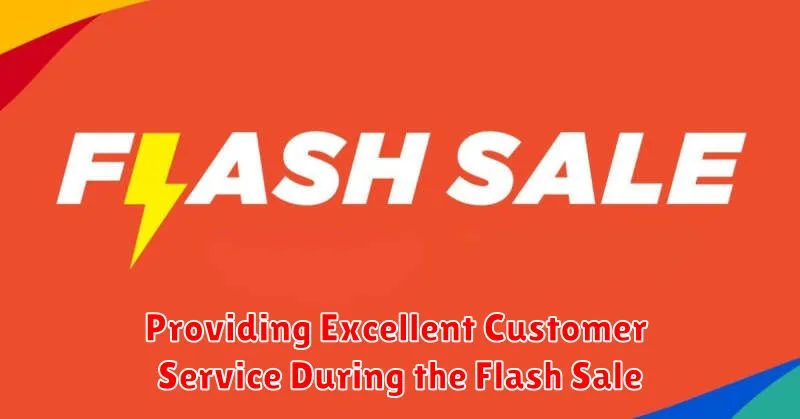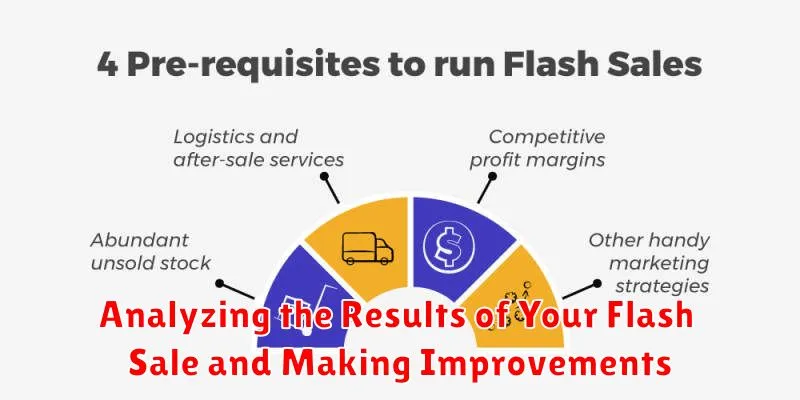Flash sales are powerful tools for driving rapid revenue growth and creating a sense of urgency among customers. Successfully executing a flash sale, however, requires careful planning and execution. This step-by-step guide outlines the essential elements of crafting a buzz-worthy flash sale that not only generates immediate sales but also builds brand excitement and fosters customer loyalty. From selecting the right products and setting strategic discounts to promoting the event and analyzing the results, we’ll cover every crucial aspect of creating a flash sale that maximizes impact and delivers exceptional results.
Learn how to harness the power of flash sales to boost sales, clear out inventory, and attract new customers. This guide provides a comprehensive framework for planning, executing, and evaluating your flash sale strategy. We’ll delve into the intricacies of targeted marketing, effective timing, and post-sale analysis to ensure you create a flash sale that resonates with your target audience and drives significant returns. Whether you’re a seasoned e-commerce professional or just starting out, this guide offers valuable insights to help you create a truly successful flash sale.
Defining Your Flash Sale Objectives and Target Audience
Before launching a flash sale, clearly define your objectives. What do you hope to achieve? Are you aiming to clear out excess inventory, boost sales during a slow period, or attract new customers? Clearly defined objectives will guide your strategy and help measure the sale’s success.
Equally crucial is identifying your target audience. Who are you trying to reach with this sale? Understanding your target audience’s demographics, preferences, and buying habits is essential. This knowledge will inform product selection, pricing strategies, and promotional channels.
Consider creating buyer personas to represent your ideal customer. These profiles can help you tailor your messaging and offers to resonate with your target audience. Think about their age, income, interests, and online behavior. Where do they spend their time online? What are their pain points? Answering these questions will allow you to craft a more effective flash sale campaign.
Aligning your objectives with your target audience is key to a successful flash sale. For example, if your objective is to clear out inventory, target customers who have previously shown interest in similar products. If your goal is to acquire new customers, focus on reaching a broader audience through wider promotional efforts.
Choosing the Right Products for Your Flash Sale
Product selection is a critical factor in the success of your flash sale. The right products will entice customers and drive sales, while the wrong ones can lead to disappointing results. Consider these key points when selecting your flash sale inventory:
High-Demand Items: Choose products that are already popular or have demonstrated strong customer interest. This built-in demand can significantly boost your sales during the flash sale period.
Excess Inventory: A flash sale is an excellent opportunity to move overstocked or slow-moving items. Offering these products at a steep discount can clear out warehouse space and free up capital.
Seasonal Products: Consider offering seasonal items as part of your flash sale. This is particularly effective for clearing out remaining stock at the end of a season.
New Product Introductions: While potentially risky, offering a small quantity of a new product at a discounted price during a flash sale can generate buzz and excitement, attracting new customers and driving initial sales.
Setting Attractive Prices and Discounts
A successful flash sale hinges on offering compelling discounts that entice customers to act quickly. Strike a balance between attracting buyers and maintaining profitability. Consider your profit margins and cost of goods sold when determining discount percentages.
Strategic pricing is key. Offering different discount levels for different products can create a tiered system of value. For example, offer a deeper discount on overstocked items or a smaller discount on popular, in-demand products. Clearly display the original price and the discounted price to highlight the savings.
Consider using different discount formats to add variety and appeal. Percentage discounts (e.g., 20% off) are easy to understand, while fixed-price discounts (e.g., $10 off) can be effective for higher-priced items. You can also experiment with tiered discounts, offering increasing discounts based on purchase quantity.
Creating a Sense of Urgency and Scarcity
A key element of a successful flash sale is the creation of urgency and scarcity. These psychological triggers encourage immediate action, driving conversions and maximizing sales.
Limited-time offers are fundamental. Clearly state the start and end times of your sale. A countdown timer displayed prominently on your website can amplify this effect.
Limited quantities also contribute to a sense of scarcity. Explicitly state the limited availability of products, for example, “Only 20 left!” or “While supplies last.” This encourages customers to purchase quickly to avoid missing out.
Highlighting popular items or showcasing bestsellers within your flash sale further contributes to perceived scarcity. Emphasize the potential for these high-demand products to sell out quickly.
Promoting Your Flash Sale Across Multiple Channels
Effective promotion is crucial for a successful flash sale. Leverage multiple channels to reach a wider audience and maximize impact. A multi-pronged approach ensures your message gets seen.
Email Marketing
Targeted email blasts to your subscriber list are essential. Segment your audience to personalize messaging and offer exclusive deals.
Social Media
Generate excitement on social media platforms. Utilize eye-catching visuals and engaging copy. Run contests or giveaways to boost visibility and encourage sharing. Consider using paid advertising to extend your reach.
Website Banners and Pop-ups
Announce your flash sale prominently on your website. Use bold banners and strategically placed pop-ups to capture visitor attention. Ensure mobile optimization for seamless browsing across all devices.
SMS Marketing (Optional)
For time-sensitive deals, SMS messages can create immediate urgency. Offer exclusive discounts to SMS subscribers.
Optimizing Your Website for Increased Traffic
A successful flash sale hinges on driving a significant amount of traffic to your website. Website optimization is crucial for handling the anticipated surge and converting visitors into customers. This involves several key strategies.
Boosting Site Speed: A fast-loading website is paramount. Optimize images, minimize HTTP requests, and leverage browser caching to ensure a seamless user experience. Slow loading times can lead to abandoned carts and lost sales.
Mobile Optimization: Ensure your website is fully responsive and provides an excellent user experience across all devices. A significant portion of your traffic will likely come from mobile users.
Clear Call to Action: Make it easy for visitors to find and participate in the flash sale. Prominently display clear and concise calls to action throughout your website, guiding them directly to the sale items.
Managing Inventory and Logistics During the Sale
Effective inventory management is crucial for a successful flash sale. Accurate stock counts prevent overselling and customer disappointment. Before the sale, conduct a thorough inventory check and update your system. Clearly define the quantity of each item available for the flash sale. This prevents accidentally selling more than you have on hand.
Organize your warehouse or storage area for efficient order fulfillment. Ensure easy access to flash sale items to expedite picking and packing. Consider pre-packing popular items to further streamline the process. This will minimize delays and improve shipping times.
Communicate clearly with your shipping partners. Inform them of the anticipated increase in order volume so they can prepare accordingly. Confirm shipping rates and delivery timelines. Consider offering expedited shipping options if feasible.
Monitor inventory levels closely throughout the sale. Real-time tracking allows you to quickly identify items running low and make informed decisions about restocking or extending the sale. This prevents issues with backorders and keeps customers informed.
Providing Excellent Customer Service During the Flash Sale

Exceptional customer service is crucial during a high-traffic flash sale. Proactive communication is key. Inform customers about potential shipping delays due to increased volume.
Staff your customer service channels adequately. Live chat, email, and phone support should be readily available to address customer inquiries promptly. Consider extending customer service hours during the sale.
Prepare a Frequently Asked Questions (FAQ) section addressing common concerns like returns, exchanges, and shipping policies specific to the flash sale. This helps manage customer expectations and reduces the burden on your support team.
Offer multiple contact methods. Provide clear and accessible contact information on your website. This allows customers to choose their preferred communication channel, enhancing their overall experience.
Analyzing the Results of Your Flash Sale and Making Improvements

After the excitement of your flash sale subsides, it’s crucial to analyze the results to understand its effectiveness and identify areas for improvement. This analysis should go beyond simply looking at revenue generated.
Key Performance Indicators (KPIs) to track include:
- Conversion Rate: The percentage of visitors who made a purchase.
- Average Order Value (AOV): The average amount spent per order.
- Website Traffic: Analyze traffic sources, peak times, and bounce rate.
- Customer Acquisition Cost (CAC): The cost of acquiring a new customer during the sale.
- Return Rate: Monitor return rates specifically for flash sale items.
By evaluating these KPIs, you can pinpoint what worked well and what needs adjustment. For example, a low conversion rate might indicate issues with website navigation or product presentation. A high return rate might suggest problems with product quality or descriptions.
Use this data to refine your strategy for future flash sales. This might involve adjusting pricing, targeting a different audience, or improving website functionality. Continuously analyzing and adapting is key to maximizing the impact of your flash sales.

